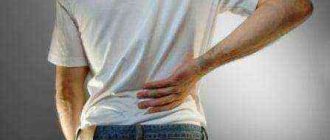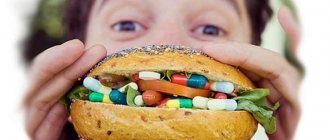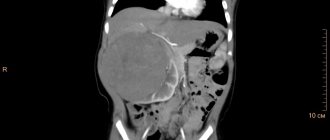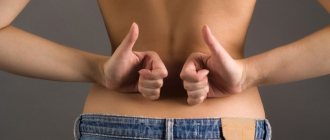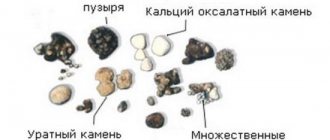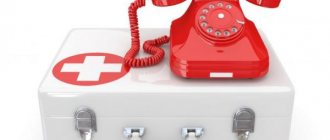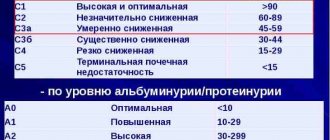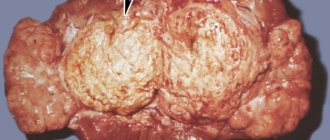Nephrolithiasis is a kidney pathology characterized by the formation of stones in it. Most often, stones are localized in the pyelocaliceal region of the kidney, as well as in the parenchyma.
All categories of people are susceptible to nephrolithiasis, regardless of age, but the largest percentage still affects men.
Stones in the kidneys
However, kidney stones in men very rarely provoke complications, but in the female body, on the contrary, urolithiasis rarely occurs in a mild form.
Nephrolithiasis. What is it and what are the causes?
Stone-like structures can appear in the kidneys, renal pelvis, and urinary tract. This process is characterized by the fact that substances that should normally be excreted are retained in the body and crystallize. It has been noticed that men have kidney nephrolithiasis much more often than women. The formation of stones is influenced by the nature of a person’s diet. The more fats, animal proteins, and foods high in acids he consumes, the higher the risk of nephrolithiasis. The disease can also be caused by a low level of urine excretion (increased sweating, small amount of fluid consumed). Frequent infections of the genitourinary system and metabolic disorders are other factors that contribute to the occurrence of the disease. A sedentary lifestyle and large weight losses can also affect the process of stone formation.
Micronephrolithiasis of the kidneys - what is it?
Micronephrolithiasis of the kidneys is a disease when salt deposits form in the urinary fluid in the form of stones.
Of these it is worth highlighting:
- Urates (formed from uric acid salts)
- Oxalates (salts of ethanoic acid)
- Phosphates (salts of phosphoric acid)
The appearance and development of diseases in the kidneys occurs due to pathological disruptions in the functioning of metabolism in the human body. The main factor in the appearance of microstones in the body is excessive formation in the form of various substances in the human body.
If this diagnosis is identified, it is necessary to immediately contact experienced doctors to prevent the development of serious complications in the patient.
Causes of the disease
Various pathological causes that cause metabolic disorders and poor nutrition can contribute to the appearance of renal micronephrolithiasis. The main cause of the formation of kidney stones is salt deposits, which appear due to various metabolic disorders in the human body. Nutrition plays an important role, which accompanies the appearance of inflammatory processes in the endocrine system.
One of the main factors in the occurrence of micronephrolithiasis is the quality of water consumed, as well as a lack of vitamins A and B.
Symptoms of diseases
Micronephrolithiasis can be detected using ultrasonic examination of the urinary system. Severe pain may occur while taking diuretics. Often the pain is not intense.
The main symptoms of renal micronephrolithiasis:
- Pain symptoms in the lumbar region
- The occurrence of pain on the sides or abdomen
- Change in urine color and appearance
- Sand enzymes in the patient's urine
Diagnostics
It is not very easy to determine the exact pathology of this disease in renal micronephrolithiasis, so it is necessary to pay attention to the various symptoms of the body. If you have any suspicions, you should immediately consult a doctor.
Diagnosis of renal micronephrolithiasis occurs through blood and urine tests, as well as scanning of the urinary ducts. Diagnostics will accurately confirm the presence of the disease in the patient. After the examination, the doctor prescribes an effective program for treating the disease.
Treatment of pathological disease
If the diagnosis of renal micronephrolithiasis is confirmed, the patient is referred for treatment according to general therapy. General treatment is aimed at reducing stones and other elements in the patient's kidneys. The patient is prescribed drugs - antispasmodics, which block pain. After this, prevention and treatment are carried out in order to avoid the appearance of inflammatory processes. Medicines are selected individually, based on the size and components of the renal formations. Preventive treatment of micronephrolithiasis of the kidneys will take a lot of time.
In the early stages, the disease does not require surgery, but if blockages are detected, surgical intervention will be required. This method is necessary in case of a large accumulation of kidney stones, which are difficult to remove naturally.
Main methods of treatment:
- Crushing stones by remote method
- Numerous punctures
- Endoscopy and laparoscopy
- Diet food
Dietary diet
It is important to follow the dietary rules. It is necessary to deny yourself a number of foods that provoke pathology in the internal organs of a person. Micronephrolithiasis cannot be cured with antibacterial drugs alone. It is necessary to create the correct diet.
- Small intake of dairy and plant foods
- Taking enough vitamin A and D
- Eliminating salty and spicy foods
- Drink more fluids and mineral water
- Eat plenty of high fiber fruits
Moderate dietary nutrition will initiate the necessary processes and the body itself will begin to dissolve the stones and will subsequently be removed from the body.
Increasing water consumption helps cleanse the urinary tract, and herbal teas will restore body functions, which will have a positive effect and the body will begin to cleanse itself.
With micronephrolithiasis of the kidneys, it is necessary to eliminate attacks of severe pain in the body. Then reduce the amount of solid formations.
It is worth noting that without the use of the necessary drugs - antispasmodics, the effect of treatment is reduced to almost zero.
After eliminating colic, treatment is carried out to eliminate infectious and inflammatory complications. To reduce kidney stones, you need to consume drugs that speed up the removal of toxins from the body. It is also worth considering the composition of the stones and their number in the kidneys. Based on the results of the tests, the doctor selects a diet for the patient.
It is important to consume foods with some protein in your diet. In the process of digestion of protein structures, the process of eliminating toxic substances occurs, which are eliminated by the kidneys. You can eat eggs, lean poultry and fish. The main thing is to consume these products in small quantities. Meat and fish varieties are best eaten boiled, or baked. The main thing is that the food contains a large amount of calories, and the meals should be six times a day.
Table salt should be strictly limited, otherwise, if a large amount of salt is consumed, the treatment of micronephrolithiasis will be an ineffective method. You should use salt with extreme caution if you have high blood pressure.
The food should contain a lot of minerals, such as potassium and phosphorus, and their amount is also determined individually. A lot of phosphorus can be found in cottage cheese, legumes, and nuts. A lot of potassium is found in bananas and dry fruits.
Great importance is attached to the high content of minerals in food: potassium and phosphorus. There is a high content of phosphorus in cottage cheese and legumes. It is necessary to limit foods with large amounts of essential oils, which can provoke the development of pathology.
Diet plays a significant role in normalizing processes in the body, so it is important to follow the doctor’s instructions when identifying a dangerous pathology.
General treatment therapy lasts until all metabolic processes in the body are restored and microlites begin to be eliminated from the body on their own. To avoid recurrence of the pathology, it is necessary to undergo regular examinations by a urologist. Further monitoring of the body's condition should always be under constant supervision.
Prevention
The most important criterion for effective kidney prevention is proper diet and control of a person’s lifestyle. Proper nutrition and elimination of unhealthy diets normalizes the internal functions of the body.
Let us note the following important factors for stimulating preventive cleansing of salt deposits:
- Constant monitoring of diet
- Drinking large amounts of water
- Avoid energy drinks and sugary water
- Avoid heavy physical activity
If you have renal micronephrolithiasis, you should not delay treatment, as this can lead to further complications. Further complications will lead to difficulty in removing stones and surgical intervention by a surgeon will be required. Moreover, if the disease is ignored for a long time, the patient may experience severe pain and attacks, which will lead to undesirable consequences for a person’s life. Treatment of the disease can take a long time until all the elements are dissolved and removed from the body.
In fact, the kidneys are a very important organ, so it is necessary to follow the rules of a healthy lifestyle and not expose the body to stress.
Symptoms
Sometimes the disease occurs without significant symptoms. However, in most cases, signs of nephrolithiasis such as low back pain and renal colic can be observed. All this may be accompanied by nausea and vomiting. Stool and intestinal gases do not pass, the amount of urine decreases noticeably. Nephrolithiasis also has the following symptoms: every third patient notes the presence of blood in the urine. This occurs due to damage to the mucosa during the passage of the stone. Body temperature is within 37.5° C. The disease is also dangerous due to its complications. If not treated in a timely manner, inflammatory processes in the kidneys, stagnation of urine, and bleeding are possible. The development of renal failure is also possible.
Symptoms of the disease
Symptoms of the disease - renal colic
It does not take much time to notice the signs of nephrolithiasis and understand what nephrolithiasis is in its most vivid manifestation. Since the disease signals itself quite clearly:
- So, with a calm (motionless) presence of stones in the urinary system, the patient can lead a completely normal lifestyle and not worry about anything. If a stone or sand begins to move, provoked by shaking, running, driving over rough terrain or physical labor, the patient will feel the following symptoms;
- Renal colic. This is a sharp pain in the lumbar region, sometimes driving the patient crazy. A person may not find a place for himself, trying to relieve the pain. Sometimes the pain syndrome is so severe that it can plunge the patient into shock. The pain can radiate to the penis (in men) and the labia (in women).
- A sharp increase in temperature to 39-40 degrees. In this case, the patient has a fever, and there is pain in the muscles of the body.
- Reducing the volume of urine. And in the released biomaterial there may be an admixture of blood, which indicates injury to the urinary tract.
- Frequent urge to go to the toilet. However, they may not end with the expected success. This may be a signal that a stone has blocked a section of the urinary tract and is interfering with the flow of urine.
- Pain and burning when urinating. Occurs when fine sand comes out in the urine.
- Vomiting or nausea. They are noted against the background of the general clinical picture and elevated temperature.
Types of stones
Most often, oxalate stones form in the kidneys. They are the hardest formations and can occur due to excessive consumption of vitamin C and problems with metabolic processes. The appearance is varied: small, large, smooth, warty. The sizes sometimes reach several centimeters. Excess uric acid in the body, a violation of purine metabolism - this is the reason why urate nephrolithiasis is diagnosed. About 5% of all kidney stones are phosphate based. Even less common are cystine or xanthine stones. Nephrolithiasis of the kidney can also be of an infectious nature. This diagnosis is more often given to women than to men.
Nephroptosis of the right kidney - treatment with folk remedies
A good folk remedy for the treatment and prevention of nephroptosis is to consume flax seeds 3 or 4 times a day. Before eating, the grains along with the shell are washed in water, sprinkled with powdered sugar and fried. If it is not possible to find flax seeds, they can be replaced with peeled sunflower or pumpkin seeds.
There is another folk remedy - a tincture of the stems of Kochia coronata. First, the plant is crushed, then 3 tablespoons are placed in a thermos, pour 400 ml of boiling water, and leave overnight. The finished tincture is filtered through a sieve. For medicinal purposes, you need to drink 50 ml 3 times a day, and for preventive purposes - 25 ml. It is recommended to take this folk remedy an hour before meals.
To prevent nephroptosis, it is recommended to drink knotweed infusion. To prepare a folk remedy, the plant must be dried in advance, then the knotweed must be poured with boiling water in the ratio of 1 tablespoon of the plant per 100 ml of water. Leave for 1 hour. The tincture must be strained before taking. Take 100 ml 3 times a day, recommended 30 minutes before meals.
When the first signs of a pathological process appear, immediately seek qualified help. Once the diagnosis is established, begin therapy. People at high risk of developing the disease should engage in prevention.
Diagnosis of the disease
If a patient notices signs of urolithiasis, then a visit to the doctor should not be postponed. Nephrolithiasis is quite easy to diagnose. First of all, a urine test is prescribed. As a rule, even in the early stages of the disease, an increase in the number of leukocytes is observed, and the ESR is also higher than normal. Neoplasms in the kidneys are clearly visible on ultrasound diagnostics and x-rays. However, it is worth noting that urates do not appear when using x-rays. In most cases, stones have a heterogeneous composition. Usually salts of a certain type predominate, while others are found as impurities. That is why almost all stones are radiopaque. To clarify the diagnosis, computed tomography and excretory urography may be needed. These methods allow you to see all the functional changes in organs and choose the most appropriate treatment tactics.
General information and classification
Nephrolithiasis, or urolithiasis, is a widespread disease found in all countries of the world. More often, this disease occurs in middle-aged and elderly people, more in men than in women. In rare cases, when the cause of nephrolithiasis is hidden in dysmetabolic diseases or anatomical abnormalities of the genitourinary system, it can also develop in children from an early age.
Urolithiasis itself is not life-threatening, but can become dangerous if certain complications develop. Among such complications, secondary bacterial inflammation plays an important role, which can not only lead to repeated inflammation of the kidney tissue, but also to death.
Depending on the root cause, primary and secondary urolithiasis are distinguished. Secondary nephrolithiasis develops against the background of preliminary infectious diseases in the area of the kidneys and ureters. Clinically necessary is the classification depending on the nature of the stones:
- Urate.
- Oxalate.
- Phosphate.
Accurate determination of the substances described above directly affects subsequent treatment. To diagnose and determine what kind of stone it is, a number of additional research methods are used.
This pathology responds well to drug and regimen treatment if the prescribed therapy is adequate and timely.
Coraloid nephrolithiasis. What it is
A special form of urolithiasis is the formation of coral stones. It has been established that, due to the characteristics of the female body, the fair sex suffers from this disease much more often. Experts note a number of factors that can lead to the occurrence of this type of stones. These include kidney diseases (both congenital and acquired), hot climate, unbalanced diet, and poor environment. The possibility of developing nephrolithiasis during pregnancy cannot be ruled out. This may be due to hormonal changes. The hereditary factor also plays an important role. Some doctors associate this disease with thyroid problems. Symptoms are as follows: pain in the lower back, kidneys, abnormal stool, nausea, blood in the urine. Also, most patients note increased thirst.
Nutrition correction
A properly selected diet for urate in the urine in most cases allows you to get rid of the unpleasant symptom and avoid complications.
The basic principles of diet therapy are based on the following points:
- strict adherence to daily caloric intake - the patient should not consume more than 2700-2800 kcal per day;
- carbohydrate products should be the basis of nutrition - up to 400 g per day;
- the amount of proteins in the diet – up to 80 g, lipids – up to 90 g;
- the menu should be designed for 5 meals;
- prohibition of consumption of cold dishes and products;
- 1-2 times a week there should be fasting days (on milk, fruits or vegetables).
Treatment methods
Small stones pass out of the body on their own and do not require intervention. The doctor prescribes a set of measures aimed at alleviating the patient’s condition. It is recommended to increase the amount of water a person drinks per day. Light physical activity is also indicated. Certain medications are also prescribed to relieve swelling and pain. A method of dissolving the stone is also practiced if urate nephrolithiasis is diagnosed. What is it and how does this process happen? Litholytic therapy is prescribed if the stone is still in the kidney. The specialist selects drugs that dissolve the formation. However, choosing your own medicine is prohibited. After all, while destroying one type of stone, the drug has no effect on others and can even enhance their growth. Therefore, nephrolithiasis and its treatment require consultation with a competent specialist.
Diet
The type of stones determines not only the required treatment, but also the diet for renal nephrolithiasis. The general recommendation concerns only the drinking regime, which should increase to 3 liters of water per day. You need to drink one glass often. You should not overload your kidneys by drinking a whole liter of liquid at a time. Distribute the entire volume over certain hours and do not forget to comply with this. At night, it is also better to drink a little plain water to prevent urine from concentrating and contributing to the development of problems.
Crushing kidney stones
If the stone is large, crushing techniques are used. This process occurs using ultrasound or laser. The latter is the most effective, as it allows you to break any stones. Crushing can occur remotely, generating a shock wave of the required power. Contact grinding is also practiced. Through a small puncture, a special liquid is simultaneously injected, thanks to which the crushed stone is immediately washed away. The entire procedure takes about one hour.
Prevention methods
To prevent the development of urolithiasis, it is necessary to follow a number of rules. It is very important to maintain a proper drinking regime. The amount of liquid a person drinks should be at least 1.5 liters. In addition, special attention must be paid to its quality. If you have hard water in your home, then you cannot do without high-quality filters. You should not overuse mineral waters, as they can provoke this disease. Proper nutrition can also protect against nephrolithiasis. If urates are detected, it is necessary to limit the amount of meat and offal. You should stop eating smoked meats. Oxalate stones have their own limitations. Foods that contain oxalic acid are prohibited. Sorrel, spinach, beans, citrus fruits, strawberries - this is an incomplete list of foods that can aggravate the situation. Phosphorus-carbonate formations require the exclusion of foods containing large amounts of calcium.
Basic principles of diet for urolithiasis
Nephrolithiasis (bilateral or unilateral) makes adjustments to the patient’s menu. In addition to diet and drinking regimen, there are other points that are worth paying attention to. Experts recommend limiting the consumption of table salt. It is also worth minimizing alcoholic drinks, especially those of questionable quality. You need to be especially careful with vitamin C, because it is its excess that can provoke kidney nephrolithiasis. Treatment of many colds is accompanied by abundant intake of foods rich in this vitamin. Therefore, people prone to stone formation should not exceed the daily allowance (1 gram). During the watermelon season, you can enjoy this berry to your heart's content. It cleanses the kidneys well and helps remove sand and small stones. It is recommended to exclude canned vegetables and juices. It is better to eat fresh vegetables and fruits, as well as prepare fresh juices.
